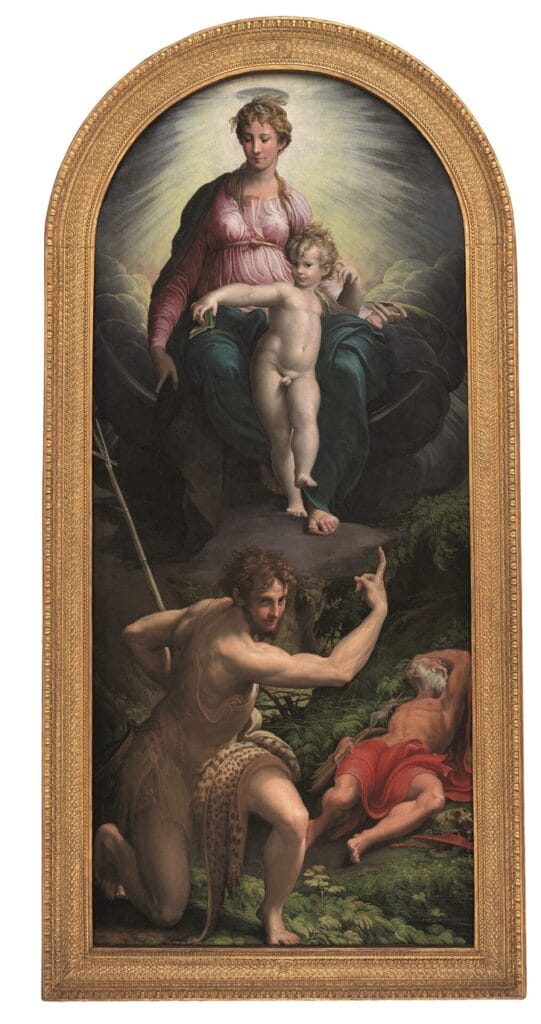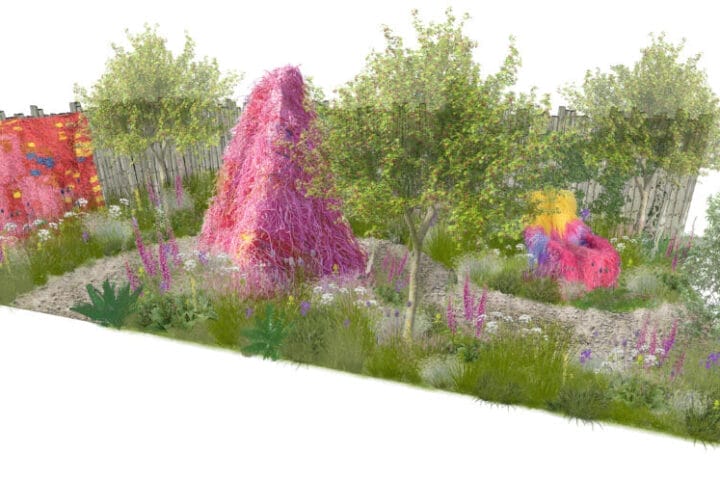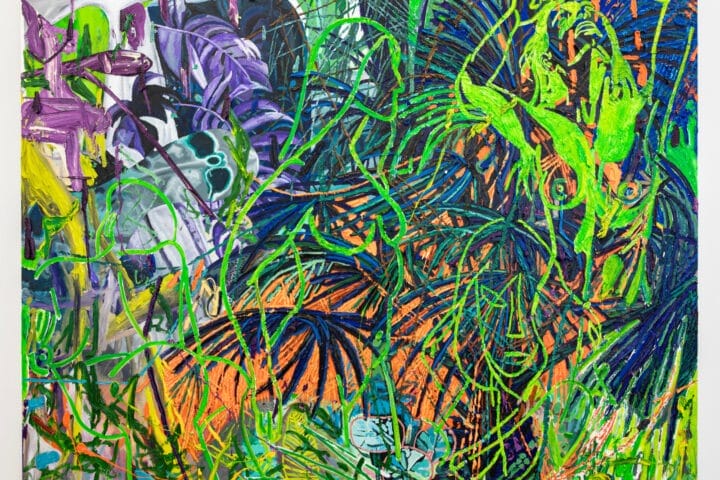In commemoration of our 200th anniversary, the National Gallery proudly reintroduces Parmigianino’s Madonna and Child with Saints (1526–27) to the public eye after a decade-long absence, following painstaking conservation efforts.
This quintessential masterpiece of 16th-century Italian art was bequeathed to the National Gallery in 1826, just two years after the institution’s inception.
Commonly referred to as The Vision of Saint Jerome—a title it acquired in the 19th century due to the unusual portrayal of the seemingly sleeping saint—this altarpiece will be showcased for the first time alongside a curated selection of some of the most significant preparatory sketches. These drawings offer a unique insight into Parmigianino’s creative journey, charting the evolution of his singular composition.

The exhibition, featuring generously loaned works from major national and international collections, provides an extraordinary opportunity for visitors to trace the artist’s creative process, from initial conceptual sketches to the finalized design. It offers a window into the mind of one of the Renaissance’s most innovative artists.
Girolamo Francesco Maria Mazzola (1503–1540), who earned the moniker Parmigianino after his birthplace of Parma in northern Italy, was born into a family of painters. By his early twenties, Parmigianino had already garnered a reputation as a prodigious talent, capturing the interest of affluent and cultured patrons. His growing fame preceded his arrival in Rome around May 1524, where he was personally received by Pope Clement VII. During this period, Rome was dominated by Raphael’s serene and classicizing style of idealized beauty. The elegance, inventiveness, and meticulous execution evident in Parmigianino’s early works earned him the appellation of a ‘Raphael reborn.’
Parmigianino painted the Madonna and Child with Saints at the tender age of 23 during his brief but influential sojourn in Rome from 1524 to 1527. Commissioned by the noblewoman Maria Bufalini as an altarpiece for a chapel in the church of San Salvatore in Lauro, an important religious complex at the city’s heart, this commission represented a pivotal opportunity for the young artist at a critical juncture in his career. Nevertheless, the painting was never installed in the church for which it was intended.
According to Giorgio Vasari (1511-1574), Parmigianino was working on this altarpiece in 1527 when the catastrophic Sack of Rome occurred. As imperial troops of Charles V stormed the city and entered the artist’s studio, they were so astonished by the painting that they allowed Parmigianino to continue his work. Ultimately, he fled Rome, hiding the painting for safekeeping. It was recovered by the patron’s heirs long after the artist’s death and relocated to their family church in Città di Castello, central Italy.
Parmigianino’s Madonna and Child with Saints exemplifies the breadth of influences he assimilated in Rome, from the works of Raphael and Michelangelo to ancient sculptures. However, more than merely a compilation of other artists’ influences, it highlights Parmigianino’s uniquely visionary approach to image-making.
Set against rays of divine light, a majestic Madonna dressed in rose pink sits enthroned on billowing clouds. Her infant son, a blonde, curly-haired toddler, steps towards the viewer. Below them, the almost otherworldly figure of John the Baptist directs our gaze upwards with an impossibly long arm, guiding attention to the holy mother and child above. Behind him, a slumbering Saint Jerome reclines amidst a tangle of overgrown roots and leaves, seemingly unaware of the divine vision above him.
Parmigianino was one of the 16th century’s most gifted and prolific draughtsmen. Nearly 1,000 drawings attributed to him survive today, making him second only to Leonardo da Vinci (1452–1519) in both quantity and technical mastery. Parmigianino devoted numerous drawings to developing The Vision of Saint Jerome, ranging from atmospheric, velvety chalk studies to dynamic pen and ink sketches. These works reveal his exquisite draughtsmanship and exceptional skill across various media.
The recent conservation treatment has successfully removed accumulated layers of old varnish and retouching, revealing the vibrant quality of Parmigianino’s brushwork and rich color palette. The painting’s new frame, crafted by the National Gallery’s Framing Department, is inspired by surviving contemporary examples, providing a sense of the painting’s original church setting.
Parmigianino’s distinctive style, characterized by elongated figures and a sophisticated elegance combined with an unexpected manipulation of space, laid the groundwork for the style later known as Mannerism. With its extreme verticality, lush brushwork, and shimmering palette, this painting has captivated audiences for nearly 500 years. This exhibition offers a rare opportunity to rediscover one of the early masterpieces of Italian Mannerism for both the public and specialists alike.
The exhibition catalogue serves as a comprehensive resource on the painting, authored by the exhibition curators with contributions from Aimee Ng, Curator at the Frick Collection in New York, and Larry Keith, Head of Conservation and Keeper of the Collection at the National Gallery. It includes a special plate section with full-page illustrations of all known preparatory drawings. Dr. Alambritis’s research presented in this exhibition has been supported by the Rick Mather David Scrase Foundation.
Dr. Maria Alambritis, Project Curator for Parmigianino, states, We are incredibly fortunate to house Parmigianino’s Roman masterpiece, the only altarpiece by him in a UK collection, here at the National Gallery. Its return to public view after a decade marks a momentous occasion to celebrate its significance. This exhibition provides an unparalleled opportunity to experience the painting alongside a selection of its remarkable preparatory drawings. I hope visitors will be enthralled by this magnificent work and immerse themselves in Parmigianino’s supremely elegant style and unique visionary world.











